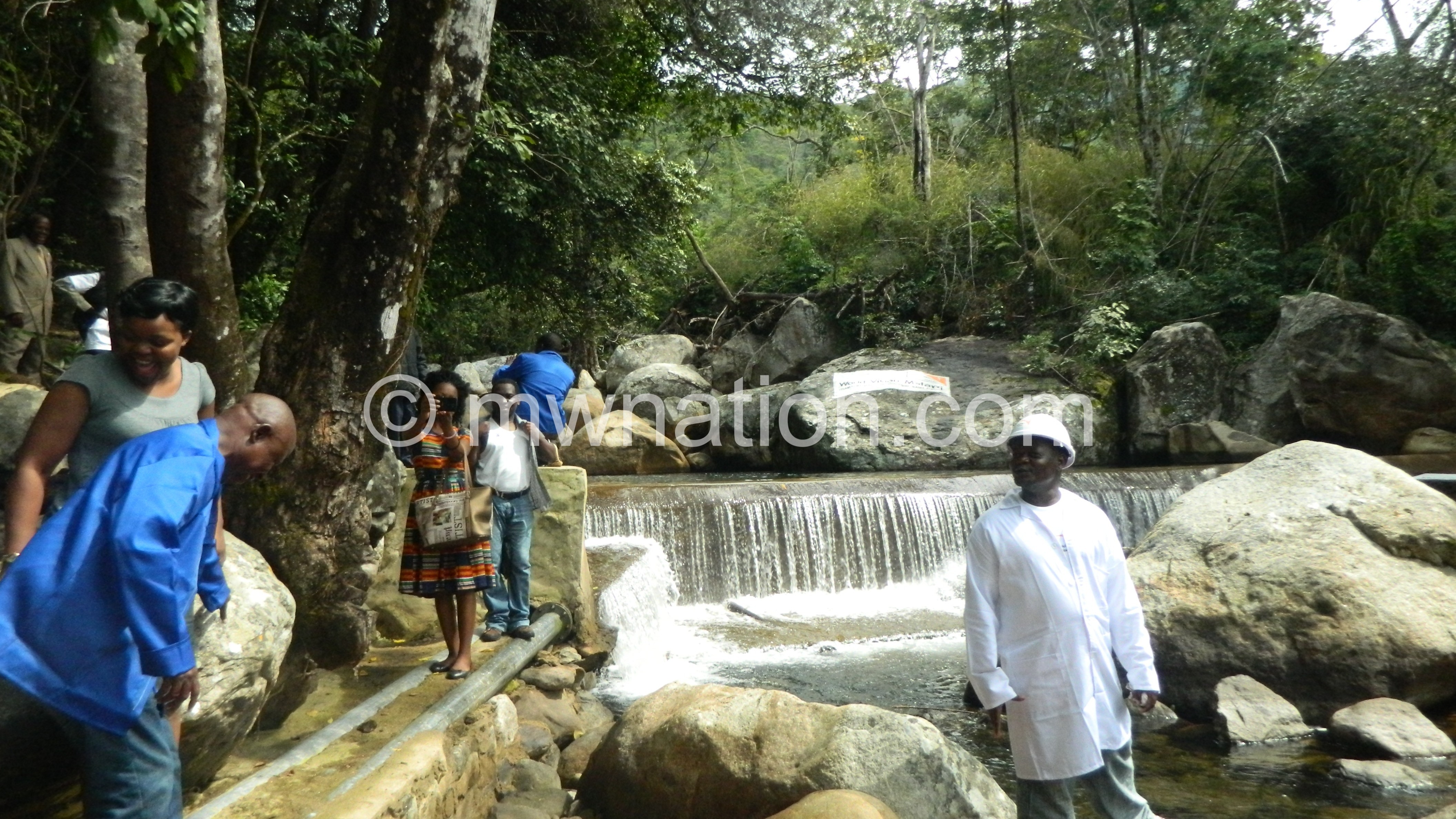An excursion into Muloza water project
Fifty-nine villages in Muloza area, under Traditional Authority (T/A) Njema in Mulanje District, lie scattered like broken china under the sun south-east of Mulanje Mountain.
To the far-east stretches the sprawling lands of Mozambique while Muloza River descends the gigantic mountain to their north-west, cascading down in torrents of crystal-clear water, rumbling around the villages and sometimes cutting through them to border Mozambique.

This is an area that boasts of many streams and rivulets, including Muloza but, just as it is the case with other communities that lie in abundance of natural resources, but fail to access them, Muloza communities have, for about three decades, been lacking clean water.
The vision to have potable water was conceived around 1980 by the Malawi Government and since then, the vision has not been fully realised. Throughout the years, the communities have watched helplessly as callous natural disasters rendered the water supply project impotent due to irreparable damage.
“Since its construction in 1980, Muloza/Mishoni water intake point in T/A Njema has suffered five disaster-caused damages. In early 2000, Canadian International Agency (Cida) and the African Development Bank in 2010 to 2014 through National Development Programme II funded its reconstruction,” reads a report by World Vision Malawi.
So the people of this area have struggled all along to get clean drinking water as the water project has been failing to take off.
In the 2015/2016 rainy season, reports say floods damaged the barrier for the fifth time, rendering the scheme not fully functional and resulted in delivering water to only two of the 59 villages from a spring intake.
John Kumwenda, director of water supply services in the Ministry of Agriculture, Irrigation and Water Development, said the project has been ongoing.
“There have been five projects so far, but all have been flops. In 2015, people of Njema said the projects have been failing because of flooding,” said Kumwenda.
Thus World Vision Malawi engaged Willy and Partner Engineering Company to carry out technical assessment and design of rehabilitation works in 2016. According to World Vision Malawi national director, Hazel Nyathi, the communities were going through a bad situation, without clean drinking water.
She said, that is why her organisation did not hesitate to help when the community came up with the idea to revive the Muloza Mishoni Gravity Water Fed Supply System.
“World Vision Malawi in collaboration with Ministry of Agriculture, Irrigation and Water Development, received a request from Njema community members to assist with reviving the Muloza Water Supply Scheme,” said Nyathi.
The project work
From down the mountain, pipelines run some six kilometres, to the intake at the top. Contractors, ZMB, engaged by World Vision to do the work, rehabilitated the barrier, restored the main pipeline from the weir to storage tanks, filters and reservoir tanks.
According to the engineer of the project, Chiku Makwinja, they tapped the water from a vantage point along the course of the river up the mountain.
“We tapped the water from here although the river starts from up there, but this place is the most suitable for a number of reasons. One of that is that during dry season, when the water levels are low, our pipes will still be under water,” explained Makwinja.
Standing at the place where the water is being tapped, the engineer said the intake had been washed away three times before, but said he is confident that the current one is going to last longer.
“Our only challenge is undercurrent, which tends to undermine this intake. However, to overcome this challenge, we dug out the original work and we reinforced the structure with steel from the ground,” the engineer said.
The engineering project at this place is marvelous as the pool from which the pipes are feeding lies across the river. The river falls slightly to this point and scatters its waters squarely to ease the construction when making a concrete ridge-like structure as a river bed.
The contractors say the project was challenging as it included drilling granite rocks at the intake to insert steel bars and transporting materials from down the mountain—some six kilometers down.
“The materials were transported from Blantyre. So the first thing we did was to construct the way for the materials, through the thicket, to enable workers to arry them to this place. We employed 80 people to help,” said Wellington Mandowa, the consultant for the project.
Ways of sustaining it
From the reports of engineers and constructors, this project has the potential to last 50 years, depending on how the people look after it.
The engineers say the priority from the community should be to protect and discourage vandalism of the pipes along the way. Again, the people have bee advised not to fell trees around the intake area.
Water Users Association (WUA), who engaged plumbers and builders to help in distributing water to the communities, echoed the engineers’ sentiments by urging the community members to protect the project’s catchment area.
However, WUA regional water officer, Phideria Moyo, said the community should be educated on how best they can care for the project.
But group village head Mdala said there will be by-laws to protect the environment whereas leader of the Village Development Community (VDC) for Njema area, Lawrence Vito, said measures to protect the water intake and its catchment area will be everyone’s responsibility.
Member of Parliament (MP) for the area [Mulanje-Limbuli Constituency], Daudi Chida, has touted the water project as a saver of children’s lives.
“We used to hear stories of children drowning in rivers when going to fetch water, but now these accidents will be prevented,” said the MP.
The project has seen over 170 taps being fixed in group village heads Mdala, Msikita, Manyamba and Makokola, but according to Nyathi, they are targeting to install 250 taps by the end of this month.
“We target to reach out to a total of 32 203 people with safe water. The work will cover seven primary schools with a total population of 9 779 learners, and Muloza Health Centre,” she said.
At the centre of the project’s beneficiaries are women, girls and children who will be saved from a number of risks.
“We will be walking short distances to reach a tap. This will save us time to do other things at home. Our daughters will no longer be late for school because of searching for water in the morning. And our children will be saved from malnutrition and water-borne diseases such as cholera,” said Agnes Scot, a beneficiary from Mwakhiwa Village.





